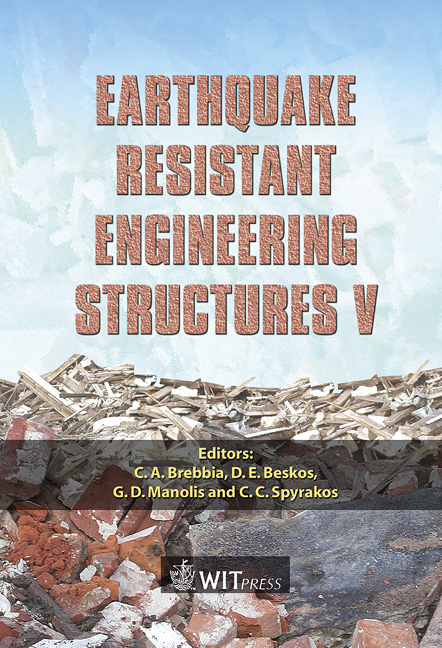Cyclic Load Behaviour Of Reinforced Concrete Beam-column Subassemblages Of Modern Structures
Price
Free (open access)
Transaction
Volume
81
Pages
11
Published
2005
Size
878 kb
Paper DOI
10.2495/ERES050421
Copyright
WIT Press
Author(s)
A. G. Tsonos
Abstract
The seismic performance of four one-half scale exterior beam-column subassemblages is examined. All specimens were typical of new structures and incorporated full seismic details in current building codes, such as a weak girder-strong column design philosophy. The subassemblages were subjected to a large number of inelastic cycles. The tests indicated that current design procedures could sometimes result in excessive damage to the joint regions. This cannot be underestimated as it may lead the ductile moment-resisting frames of modern structures to premature lateral instability. Keywords: beam-column frames, beams, columns, connections, cyclic loads, earthquake resistant structures, hinges (structural), reinforced concrete, shear properties, structural analysis. 1 Introduction The key to the design of ductile moment-resisting frames is that the beam-to-column connections and columns must remain essentially elastic throughout the load history to insure the lateral stability of the structure. If the connections or columns exhibit stiffness and/or strength deterioration with cycling, collapse due to Ρ -∆effects or to the formation of a storey mechanism may be unavoidable [1,2]. Four one-half scale beam-column subassemblages were designed and constructed in turn, according to Eurocode 2 [3] and Eurocode 8 [4], according to ACI 318 (1999) [5] and ACI-ASCE Committee 352 (1985) [6], and according to the new Greek Earthquake Resistant Code (E.R.C.-1995) [7] and the new Greek Code for the Design of Reinforced Concrete Structures (C.D.C.S.-1995) [8].
Keywords
beam-column frames, beams, columns, connections, cyclic loads, earthquake resistant structures, hinges (structural), reinforced concrete, shear properties, structural analysis.





